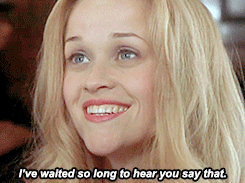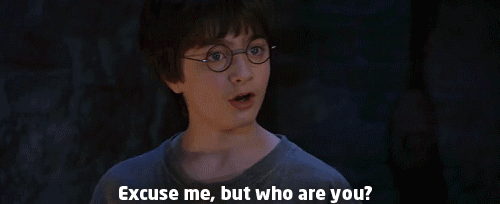Dialogue Tags, Actions Beats & Voice Descriptors: Oh my!
Some things are just tricky.
Taxes. French cooking. Training my dog not to lick me in the face no matter how many times I tell her not to.
Dialogue Tags, Action Beats, and Voice Descriptors do not have to be tricky, friends. And there is a way to (first) differentiate and (second) use them effectively so your agent/editors will sigh with relief.
Also: take care that if this is a trouble spot for you, you’re not alone! As a freelance editor, this is one of the most common errors I see, and nothing that can’t be cleared up quickly.
So let’s break it down!
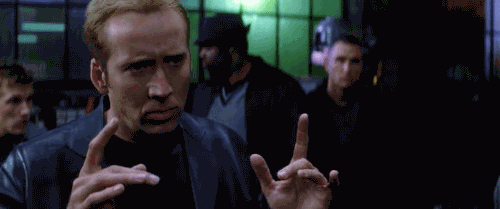
(these definitions are my takes btw, so I’m sure Dictionary.com is gonna say something diff)
Dialogue Tag – used in the same manner as a social medial photo tag, this attributes/assigns the speaker to the dialogue.
“I’m speaking for an example,” she said.
The “she” is the identifying pronoun of who spoke, and thus, the dialogue tag.
How to Punctuate!
Point Blank: Dialogue tags get punctuated with the dialogue as part of a whole sentence together.
Meaning:
1. The dialogue isn’t punctuated to a close with a period
2. The dialogue tag is still ruled by normal mid-sentence capitalization rules, and
3. We need a finalizing punctuation mark at the end of the dialogue tag, unless we’re continuing the dialogue.
“I’m speaking for an example,” she said.
i. Notice the comma. The dialogue isn’t punctuated to a close with a period. It is continuing with a comma. The sentence isn’t done. We don’t drop rando periods in the middle of sentences ;)
ii. The dialogue tag of “she said” is lower case, because it is in the middle of a continuing sentence. The tag is still ruled by normal mid-sentence capitalization rules. Had this been a proper noun like Jennifer or Joe, we would capitalize their names, but otherwise, we don’t capitalize random words in the middle of sentences, right? RIGHT?
iii. We have a period at the end of the tag. The sentence has been ongoing with a comma, but now we need to stop it to start a new one. We use a period.
Now, Dialogue Tags by themselves can get a lot more complicated than that. We have times when they interrupt dialogue, or come before it, and things can get a little . . . crazy.

So if you’re interested in a more detailed breakdown of dialogue tags and how to punctuate them, check out my post on them: HERE
Action Beats – a description of a physical motion of the character, used to show the tone of the dialogue spoken. By being placed on same line as dialogue spoken, also acts as an indicator of who is speaking. Is punctuated INDEPENDENTLY of dialogue.
The character lifted her chin, glaring at her counterpart. “You know exactly how I feel.”
1. The description of the character before the dialogue . . . that is the action beat.
2. Notice the period. Action beats are NOT joined with dialogue via comma, whether before or after dialogue.
Jennifer lifted her chin, glaring at her counterpart. “You know exactly how I feel.”
“Have it your way!” Joe turned and stormed away.
The action beats are doubling as dialogue tags – without using said, we still know who is speaking because of the action associated with it is on the same line. We also know exactly how these two are feeling based on the actions used.
How to Punctuate!
These get punctuated like another normal sentence. They are separate from the dialogue, so do your thing. Just make sure they are on the same line as the dialogue they are “Action’ing” for.
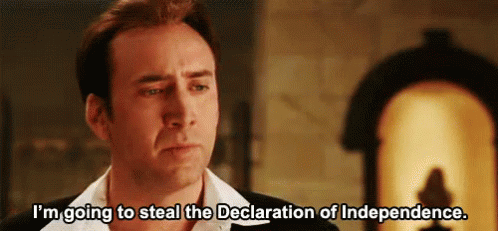
Keep in mind, things like: laughing, smiling, etc. are ACTIONS and not DIALOGUE TAGS.
"I think you're funny." She laughed. "Like really funny. [RIGHT]
"I think you're funny," she laughed, "like really funny. [WRONG]
"So, how about Wednesday night?" He smiled. "You think that'll work?" [RIGHT]
"So, how about Wednesday night?" he smiled, "you think that'll work?" [SO WRONG]
Voice Descriptors – a description of the character’s tone of voice, but not including a dialogue tag.
Jennifer dropped her voice to a whisper. “I’ve known all along.”
1. This is a description of the voice change, not the same as “Jennifer whispered,” which would be a dialogue tag.
2. Notice the period. Voice Descriptors are NOT joined with dialogue via comma, whether before or after dialogue.
Let’s see it a little more expanded :)
Jennifer dropped her voice to a whisper. “I’ve known all along.”
“Why didn’t you say anything?” Joe’s voice was coarse with longing; breathless with desire.
1. The Voice Descriptors are setting the tone for the dialogue, and describing how it’s being spoken.
2. They’re also identifying who is speaking. But they’re not the same as action beats, because they're not actions, and they’re not tags, 'cause they only care about the voice. Aren't they fun? hehe
How to Punctuate!
These get punctuated like another normal sentence. They are separate from the dialogue, so do your thing. Just make sure they are on the same line as the dialogue they are describing.
How & When to Use These Bad Boys

You’re gonna hear a lot of things out in the world:
“Said is dead.”
“Adverbs are for noobs and people who kick puppies.”
“Voice descriptors are fluff and should be edited down to tags—”
WHATEVER, NOSEPICKERS!

The POINT is that all three are important.
All are necessary.
But it’s all about BALANCE.
You know that sentence-length color coded thing everyone loves that shows how varying your sentence length is so much better than just using 5 word sentences forever? Well, we’re gonna do the same thing here, but with action beats and dialogue tags and voice descriptors.
This is an excerpt from my #WIP, Rallied:
“I’m sorry, Tommy,” she whispered, “about everything I said last night.”
Everything about him sunk—his shoulders, his breath, everything—and then Tommy nodded, his voice gratingly quiet. “Me too.”
Evan found her smile, lifting one more kiss from his lips before she stepped back, tossing her hair. “So, I have an idea of how to make it up to you. Well, more of a ‘Guess what we’re doing tonight?’”
Tommy sighed, crossing his arms. “My answer is still no, Evan. I can’t co-drive for you.”
“No, I know it is. It’s just . . .” She shrugged one shoulder, smiling. “Wanna go for a ride?”
So:
- I have a dialogue exchange going back and forth, but I only use a dialogue tag once.
- I also only use one voice descriptor.
- My action beats are doing most of the work for me, doubling as not only tags of who is speaking, but the emotions the characters are feeling, and the tone change of the conversation.
Now, for some people, I use way too many action beats like the sighing, and the arm crossing, the shrugging, etc. Other people prefer more “saids,” and some prefer to use voice descriptors. This is all comes down to your style, and you should absolutely find what works for you.
But keep in mind: it’s all about balance, and using all three to tell your story in the most effective way possible.
Let's look at it again with dialogue tags ONLY:
“I’m sorry, Tommy,” Evan said, “about everything I said last night.”
“Me too,” Tommy said.
Evan said, “So, I have an idea of how to make it up to you. Well, more of a ‘Guess what we’re doing tonight?’”
Tommy said, “My answer is still no, Evan. I can’t co-drive for you.”
“No, I know it is. It’s just . . .” Evan asked, “Wanna go for a ride?”
Yeah NOPE. Fifty Shades of Yuck.
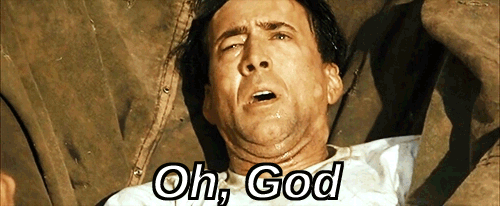
So please, darlings, play with your dialogue tags! See if you can swap them for an action beat that will work harder to show the tone and emotions of your characters. Try a voice descriptor for some extra oomph. Mostly, don't just use one of the three ALWAYS and forget the other two!
You will no doubt have a favorite, but... all things in moderation, my loves.
It makes your editors and readers happy, happy people :)

Until next time, Happy Reading!
xoxo
Katie











